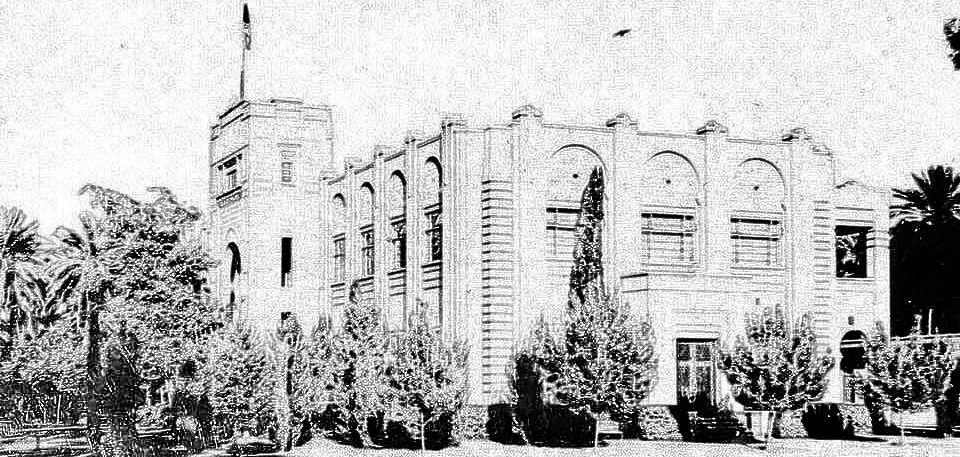Baghdad College Years
Ali Barbouti, Architect
March 2023
The Beginning:
In March 1932 Baghdad College was established and opened its doors at Al-Muraba’a street in one of Baghdad’s old traditional neighborhoods by four founding Jesuits, namely Fr. William A. Rice (1891-1946) years in Baghdad 1932-1939, Fr. Edward F. Madaras (1897-1967 buried in Baghdad) years in Baghdad 1932-1967, Fr. Edward J. Coffey (1897-1986) years in Baghdad 1932-1935 & Fr. John A. Mifsud (1895-1977) years in Baghdad1932-46 and 1948-64).
“An Iraqi school for Iraqi boys” was the motto. The following year there were around 100 students in the school and the first graduation ceremony took place in 1937.
“An Iraqi school for Iraqi boys”

The four founding Jesuits, left to right - Fr. John A. Mifsud, Fr. Edward F. Madaras, Fr. William A. Rice, Fr. Edward J. Coffey. Image: The Jesuits by the Tigris, 1994.
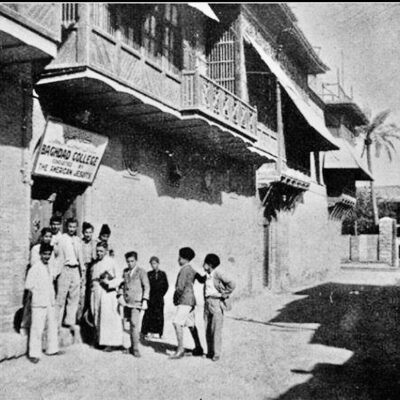
Baghdad College Al Muraba'a Street Location. Image: Gailani Tube.
Architecture and Construction of a New School:
With ever increasing students enrolment and demand for space, the Jesuits subsequently purchased 42 acres (about 200,000 m2) of land in Al-Sulaikh district just of the Tigris River. They embarked on a purpose-built school in 1934 which was built in stages from 1936 until its completion in 1954. At the beginning they rented “The House on the River” near the newly purchased land and they used it for both School and residence for the Jesuits. The school then moved to the newly finished Administration / Classroom building in 1934 & in 1939 the faculty / boarders residence was completed. (located in the smaller land west of the main site).
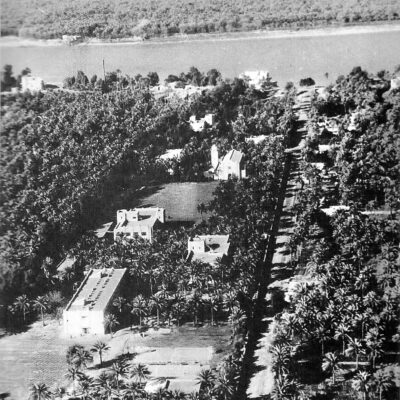
Ariel view of BC purchased land in Al-Sulaikh. The Tigris River is seen at the top of photo.

Chronological record and location of Baghdad College buildings1934 -1969. Image reproduced from The Jesuit by the Tigris.
The new school was designed and supervised by Fr. Leo J. Guay, who was inspired by Iraqi architecture while relying on both Br. Italo R. Parnoff who in 1949 was one of the construction supervisors and Fr. Charles Loeffler who designed the gardens and the irrigation systems for the large green fields.
The new Cronin Building included innovative air-cooling vents underneath the floors. The Rice Memorial Science Building was completed in 1950. All the buildings’ exterior walls were finished with traditional yellow Iraqi brick, while all internal walls were painted in yellowish-beige colour on the top part and a dark hunter green washable oil paint from dado level down.
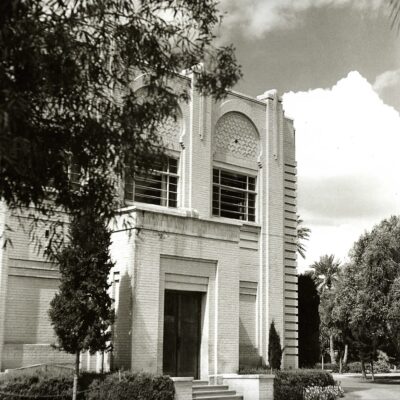
The Administration Buildings. Image: Al-Iraqi Yearbook 1967.

The Administration Building Arcades. Image: Al-Iraqi Yearbook 1971.

Ceiling detail of the arcade, showing yellow brick patterns.
The buildings had thick insulated external walls that helped maintain a comfortable temperature despite the lack of any cooling or heating equipment inside. We never felt the extreme high or low temperature of Baghdad climate. All furniture of classrooms was solid polished light stained wood with the writing tables attached to the students’ seats comparable only to those used in higher colleges and universities at that time.
Remarkably, the school was always kept clean and tidy by a team of well-trained housekeeping and maintenance staff and gardeners, mostly Iraqis. Littering was always forbidden and if caught, a student would subject himself to community work like cleaning all fields after school hours.
Student Transport:
To facilitate students commuting to and from school, a fleet of buses was established with Fr. Coffey being in charge at the early stages. In our time in the mid-sixties, those remarkable yellow school buses managed to transport students from different city districts to school in the morning and return them back home in the afternoon and because of the ever-increasing number of students, they split the buses’ schedule into two shifts in the mornings and two in the afternoons.
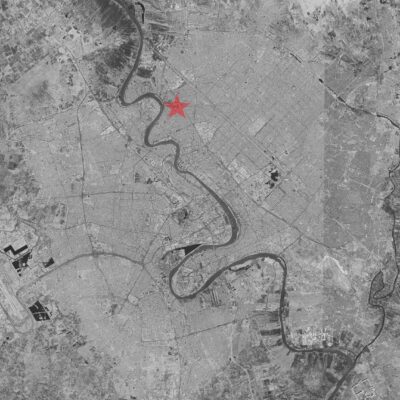
Location of Baghdad College in Baghdad City.

Baghdad College Old Buses. Image: Al-Iraqi Yearbook 1947.

New Yellow Buses. Image: Al-Iraqi Yearbook 1968.
A Privileged School:
The school’s students enjoyed advanced and fully equipped Chemistry, Physics & Biology labs. The Science Building state of the art accommodated a stepped lecture theatre, while a sophisticated English lab helped students speak the language with proper pronunciation and accent. Baghdad College was further enriched by a large and very resourceful library that made the school so admired and cherished by the students and the public alike.
The school shop was a pleasure for us to frequent. There, we could buy all kinds of stationary, learning articles and books including the BC trademark item “The Yellow Pad” that we cherished executing our homework on, never mind the dreaded quizes & exams.
Baghdad College was particularly unique and privileged amongst other schools for the emphasis it placed on extracurricular activities that were designed to enhance aspects of humanity, help build the character and direct interests of the students. Sodality counsel, Debating society, Literature & Art society, Business society, Collectors for the Poor etc. were activities that we happily participated in. Some enjoyed playing board games that were made available after school hours.

Baseball Game. Image: Courtesy Dr. Salar Baban.
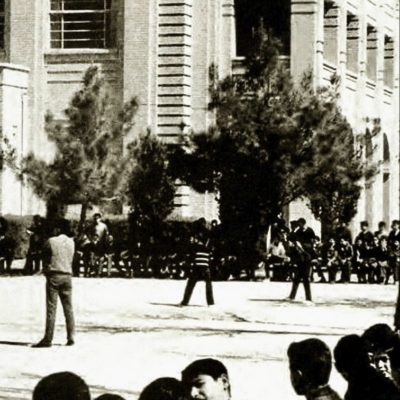
Sport Event. Image: Al-Iraqi Yearbook 1965.
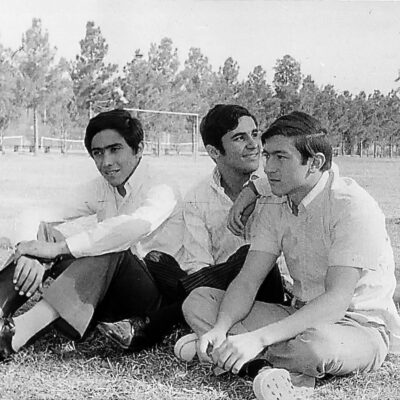
`` Class 72`` friends Samir Mahmoud, Ali Barbouti and Ali Al-Khalef. At the school sport fields in 1971.
Sports were no exception. The school encouraged students to take an active part in any sport like baseball, football, basketball, tennis, handball, volleyball, table tennis, track & field etc. Ample green fields, beautifully fitted out sports courts and facilities formed part of the identity of the school. Even stylish sportswear was available to sporting students including baseball bats, gloves, football boots and tennis rackets.
We thoroughly enjoyed those big annual sports events and track and field days. The intensely awaited baseball game between the teachers and students marked a special day in our sports calendar. The students were promised a day off if they won and sure enough the students did the honors one year and earned the special luxury of a day off for the whole school.
The canteen and its surrounding grounds were one such casual social centre for us to spend lunch breaks in while enjoying delicious snacks and sandwiches like famous “Poteta Chap” wrapped in warm Iraqi Sammoun.
Besides the American Jesuits and teachers, BC had many Iraqi teachers for different subjects. Most of the school’s scientific subjects were taught in English while Arabic language, history, and geography were taught in Arabic all in accordance with the curriculum of the Iraqi Ministry of Education.
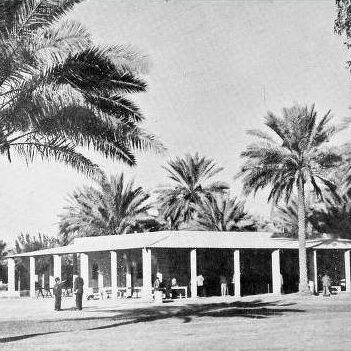
School Canteen at the Al-Sulaikh Location.
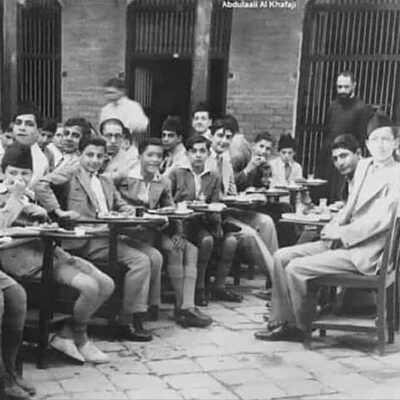
The Canteen at Al Muraba'a Street Location.
During the three years we spent with the Jesuits, all students were treated equally and with respect with no discrimination, exceptions or prejudice based on religion or family connections. The evaluation was based on hard work, performance, and academic pursuit. The competence and academic excellence of students were under constant review by the Jesuits. In the first and second years, there were eight sections which were reduced to six sections in the third year. This was further decreased to four sections in the secondary years.
Graduations and School Events :
The first class graduated in 1937, from left to right seated: Arman Bahoshy, Marcel de Marco, Fr. Charles W. Mahan, Fr. William A. Rice, Fr. Joseph Merrick, Albair Sabbagh, Robert Pedrouni. Standing: Louis Abdul Ahed, xx, George Shaffu, Joseph Yunan, Edward Kittah, Nu’al Shammas, Henry Marmarchi.
Image: Courtesy Dr. Basim Shaffu.
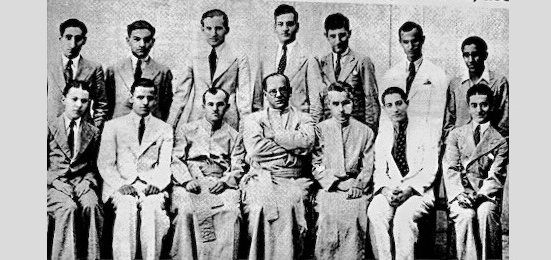
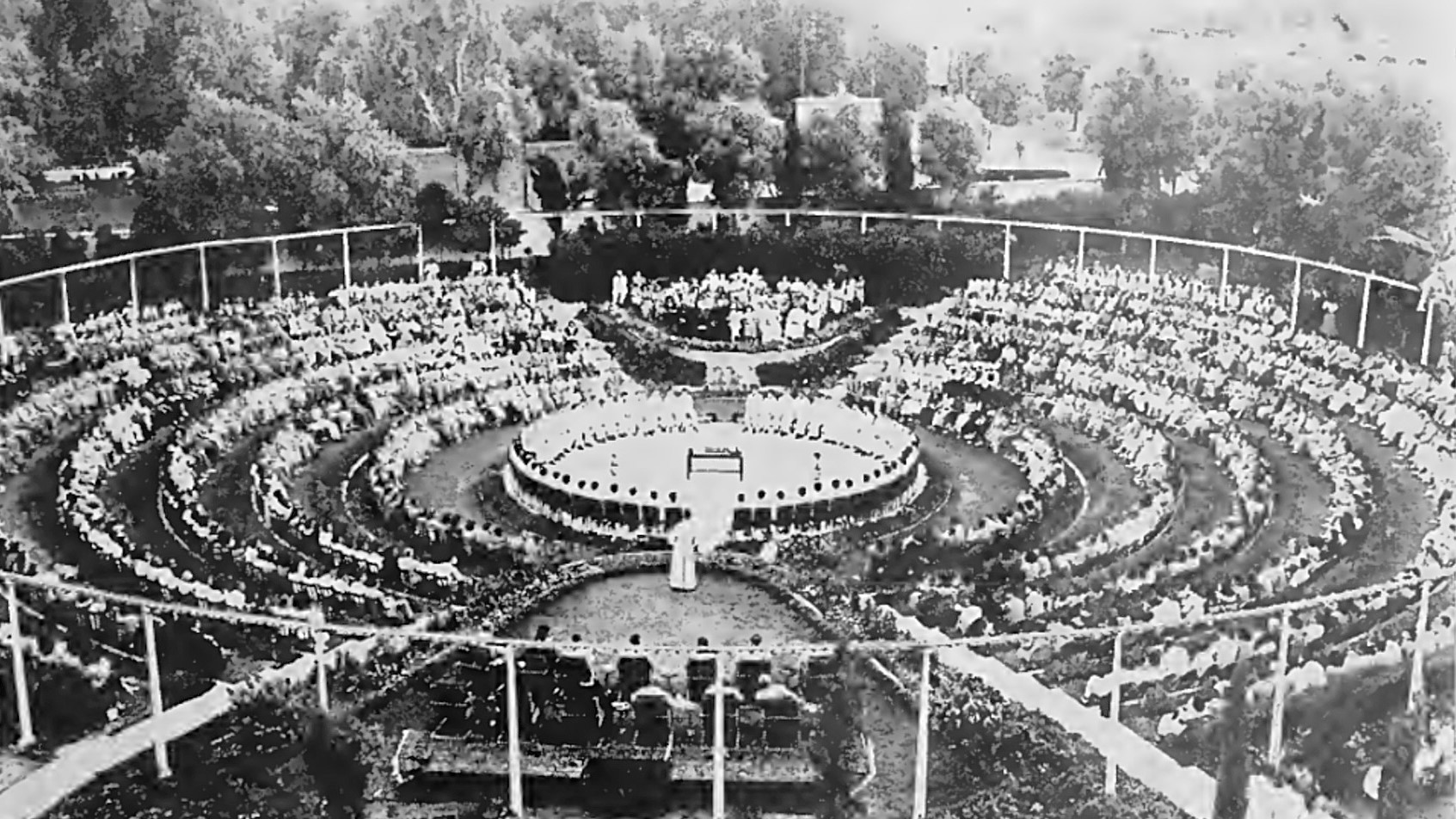
Graduation Ceremony at King Feisal Gardens. Image: Al-Iraqi Yearbook 1950.
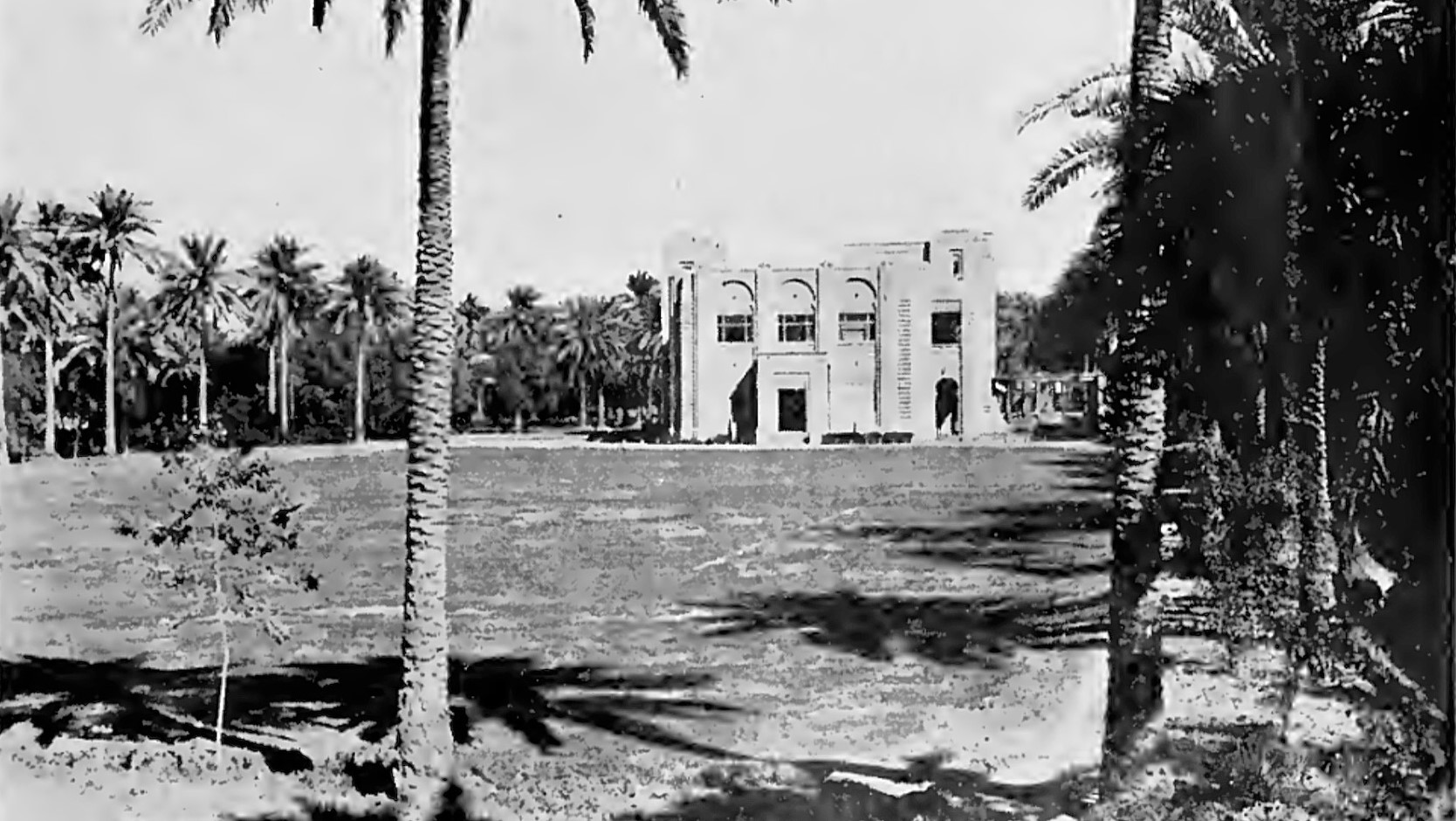
Open Space for Sport Activities, Administration Building at the back. Image: Al-Iraqi Yearbook 1950.
End of a Mission:
Sadly, the Jesuits’ noble mission ended abruptly in 1969 when they were unfairly expelled by the Iraqi government of the time. This arbitrary and senseless decision came after a long journey, of more than 37 years of selfless sacrifice, dedication and good-will, giving Iraq one of the finest educational institutes the Country and the region ever had. It was a beacon of hope for generations to come. Over 4000 students made it to graduation from Baghdad College over 37 years having been well-prepared for the best universities and colleges both in Iraq and around the world. And they later went on to establish remarkably successful careers both in Iraq and the diaspora.
Following the departure of the Jesuits, the Iraqi government in their attempt to maintain the school’s high academic standards, gave it ‘Special Status’, recognition, and independence and was placed under the jurisdiction of the Ministry of Higher Education, which was responsible for managing universities and research centres, rather than under the Ministry of Education. They kept all the original Iraqi staff and hired additional renowned experienced Iraqi teachers and university lecturers.
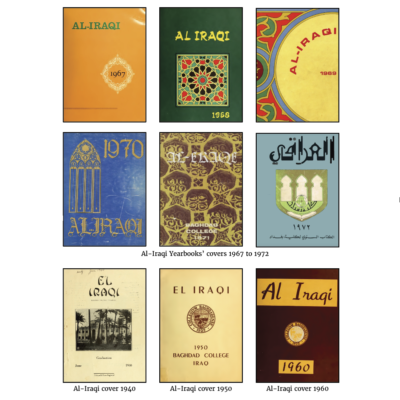
Our “Class of 1972” spent the first three years of the intermediate education with the Jesuits while the last three years of secondary education were spent under the new Iraqi administration.
Even though the Jesuits were a tough act to follow, the newly appointed Iraqi management and teaching staff, did their best to maintain the high teaching standards set by the Jesuits. The ‘Special Status’ that the school initially enjoyed was later revoked, and the school reverted to the control of the Ministry of Education.
With a shout with a song.
We will cheer the boys along.
Under banners of Gold and Maroon !
While we do while we dare.
Proudly weaving everywhere
Are the banners of Gold and Maroon
So it’s High High High !
Always B.C. High!
Singing a glad merry tune !
and will cheer B.C.
on to victory
Under banners of Gold and Maroon !
Baghdad College School Song

Baghdad College School Emblem.
Bibliography
- MacDonnell, Joseph, Jesuits by The Tigris, 1994.
- Shadid, Anthony, The American Age, IRAQ, 2012.
- Baghdad College – Wikipedia.
- Daoud, Samir Serope, Building the Man, Building the Nation, 2021.
- GailaniTube.com The Story of Baghdad College, 2014.
- Baghdad College, Al Iraqi Year Book, Various years.
- Some of the old pictures are obtained from the internet.
- The approximate land area of BC school was computed from Google maps.
- My appreciation to my BC friends who helped me with this article.
Cover Image
Baghdad College Administration Building built in 1938.
————————————————————————————————————————————————————————————————————————————————————————————————————
About Ali Barbouti,
Ali Barbouti an architect and entrepreneur, born in Baghdad/Iraq and a Canadian since the 1990s. Graduate from Baghdad University, Department of Architecture. Ali started his career in the design development of mixed-use and residential projects; working on a variety of projects with the Iraq Consult in Baghdad; Kuwaiti Engineer Office (KEO) in Kuwait; Kirby Building Systems in Kuwait and Saudi Arabia. His career and interest progressed into the construction field reaching a position of Director with Al-Latifia Trading & Contracting in Saudi Arabia where he remained for over 20 years.

